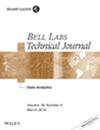相邻钢筋混凝土建筑间冲击效应研究与分析
Q1 Engineering
引用次数: 0
摘要
在地震活动过程中,相邻建筑物发生非同相振动,引起相邻建筑物之间的碰撞。由于城市土地成本较高,人们倾向于将建筑物附加在地产线上。当相邻的建筑物之间几乎没有空隙或没有空隙提供分隔时,地震就会引起震动。由于冲击效应,相邻建筑物可能发生结构和非结构破坏。本研究的主要目的是评估与相邻结构没有间隙的普通住宅RC建筑的地震反应,并找到尼泊尔常用建筑的最小间隙要求。在本研究中,考虑了相邻建筑之间不同距离的两种不同情况。第一种情况是相邻的建筑具有相同的层高但不同的层数。它包括4层和2层以及4层和3层的模型。第二种情况是相邻的建筑物层高不等,但层数相同。它包括具有3层和3层以及4层和4层的模型。在这两种情况下,相邻的建筑物具有相同的材料和截面特性。利用El-centro地震资料作为地震动进行了非线性动力分析。采用间隙单元来模拟建筑物间的碰撞力。相邻建筑具有不同的整体高度,在SAP 2000 v 15中使用间隙元素进行冲击研究。给出了关节位移、关节加速度、冲击力等方面的地震反应。给出了冲击和不冲击两种情况下关节位移和关节加速度的比较。通过NBC和IS规范的间隙计算,ABS和SRSS方法的间隙计算进行了比较,提出了避免相邻结构间冲击力所需的间隙,并推荐了适当的间隙。本文章由计算机程序翻译,如有差异,请以英文原文为准。
Study and Analysis of Pounding Effect between Adjacent RC Buildings
Pounding occurs when the adjacent buildings start vibration out of phase during the seismic activity which causes the collision between the adjacent structures. Due to higher cost of land in cities people have tendency to attach the buildings at property line. Earthquakes can cause pounding when adjacent buildings have little gap or no gap providing separation. Due to pounding effect structural and non – structural damage may occur in the adjacent buildings.
The main objective of this research is to assess the seismic response of common residential RC buildings that has been constructed with no gap with the adjacent structures and to find the minimum gap requirement for the commonly constructed buildings of Nepal.
For this study two different cases with varying separation distance between adjacent buildings have been considered. First case is the adjacent buildings having equal storey height but different number of stories. It includes models having 4 and 2 stories and 4 and 3 stories. Second case is the adjacent buildings having unequal storey height but same number of stories. It includes models having 3 and 3 stories and 4 and 4 stories. In both cases adjacent buildings have same material & sectional properties. Non-linear dynamic analysis is performed using El-centro earthquake data as ground motion. Gap element has been used to simulate the pounding force between buildings. Adjacent buildings having different overall height are modelled in SAP 2000 v 15 using gap element for pounding study. The seismic responses in terms of joint displacement, joint acceleration, pounding force are presented. Joint displacement and joint acceleration comparison for both pounding and no pounding cases are presented.
Gap calculation from NBC and IS code, ABS and SRSS method was compared with gap required to avoid pounding force between adjacent structures and appropriate gap was recommended.
求助全文
通过发布文献求助,成功后即可免费获取论文全文。
去求助
来源期刊

Bell Labs Technical Journal
工程技术-电信学
自引率
0.00%
发文量
0
审稿时长
6-12 weeks
期刊介绍:
The Bell Labs Technical Journal (BLTJ) highlights key research and development activities across Alcatel-Lucent — within Bell Labs, within the company’s CTO organizations, and in cross-functional projects and initiatives. It publishes papers and letters by Alcatel-Lucent researchers, scientists, and engineers and co-authors affiliated with universities, government and corporate research labs, and customer companies. Its aim is to promote progress in communications fields worldwide; Bell Labs innovations enable Alcatel-Lucent to deliver leading products, solutions, and services that meet customers’ mission critical needs.
 求助内容:
求助内容: 应助结果提醒方式:
应助结果提醒方式:


